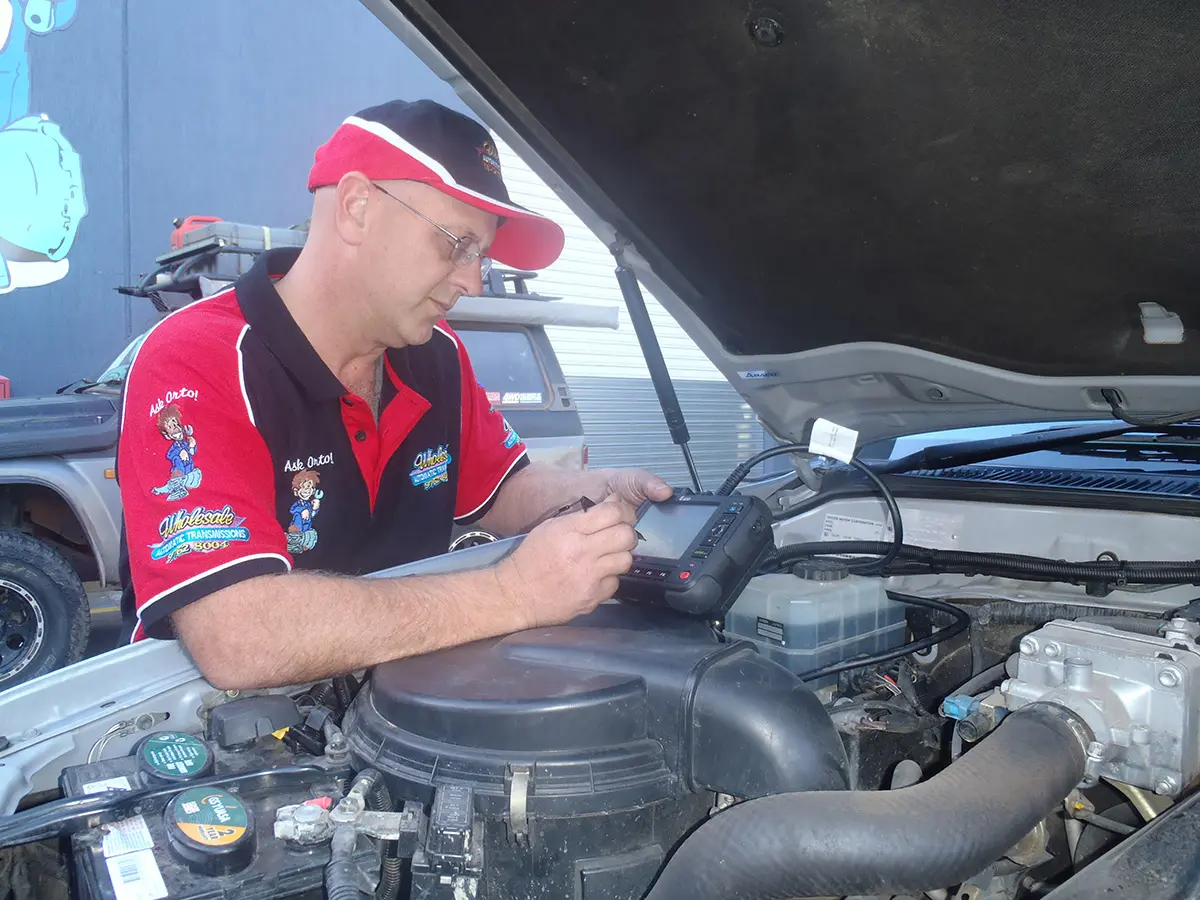
About the Author
Jonathon "Jono" joined Wholesale Automatics in 2013 to provide a solid IT / Computers / Electronics background. Jono has been instrumental in the development of the Land Cruiser 6 Speed Automatic, Land Cruiser 5 Speed Automatic and Nissan Patrol 5 Speed Automatic Transmission Computers. Jono also leads the development of the Torque Converter Lockup kits and the Website.
When Doing Diagnostics – Information is Key
Naturally one of the most common topics for phone calls and emails from customers is about diagnostics or trying to diagnose an unknown problem. While there are many symptoms that we can interpret and provide an educated and experienced diagnosis, however sometimes we are left a little confused as the symptoms described don’t seem possible. So I wanted to provide a brief guideline of basic diagnostics that can be performed to assist us in providing an more accurate diagnosis.

One bit of information that is often overlooked is simply the details about the vehicle. We need detailed information about the vehicle as some vehicles can have 2, 3 or even 4 possible transmissions all in the same year. In order to determine which automatic transmission your vehicle has, the minimum information we need you to collect includes:
- Make
- Model
- Build Month and Year
- Engine Capacity
- Diesel or Petrol

I’ve owned the vehicle since 2010 and I have been travelling Australia since I purchased the vehicle while towing a 3T caravan and the transmission has been serviced twice in that time. I have also had the A/T Temp light come on a couple of times while heading up the Toowoomba Range. But I’ve only experienced this issue in the past 6 months.
Common Symptoms and Possible Causes
Possible Causes: The two main possible causes for this are: Loss of Fluid or Transmission Damage. Loss of fluid could simply be caused by a leak or if the transmission got too hot at some stage the fluid could come out through the breathers. First thing to do is check the fluid level for your transmission. If the fluid level is correct then most likely there is transmission damage. I recommend contacting us or your local transmission specialist to see about a physical inspection of your transmission.
Possible Causes: This generally describes what is commonly called ‘Limp Mode’ where the TCU (Transmission Control Unit) has disable gear changes and locked into a single gear. Most often it is engaged by the TCU as a safeguard because it has detected an electical error or possibly the first signs of transmission failure. Usually this will be accompanied by a flashing light on the dash. It is also possible that if the TCU has stopped working due to blown fuse or loss of power. All transmission have a default ‘No Power Mode’ which is usually the same as the ‘Limp Mode’. First check for any blown fuses.
If you can not find any blown fuses and a tow truck is not an available to you, then the vehicle can be driven in this state for the sole purpose of getting to a workshop for proper diagnostics. We would not recommending driving the vehicle on a regular basis in this condition as you have the possibility of turning a simple electrical issue into a full transmission rebuild due to being burnt out.
Possible Causes: We see this one quite a bit, especially with the older vehicles. This symptom is quite often referred to as a flare. It basically means that the transmission is having troubles engaging the next gear. This can be a result of low pressure due to an incorrectly adjusted cable or excessive wear to the clutches inside the transmission. Or it could simply be the T-Bar shifter is out of alignment and occasionally makes the computer think that you have shifted into neutral.
Other Posts from This Issue
Automatic Transmission Service and Accessories – STORE AVAILABLE ONLINE!
Well if you like traveling around this great country or if you’re putting some plans in action of places to see and experience firsthand, then the number one place is…
Servicing Sealed Transmissions
One of the most common questions we get asked as experts in the trade about modern automatic transmissions in 4WDs is, “do I have to service my transmission?”
Kimberley Adventures
Well if you like traveling around this great country or if you’re putting some plans in action of places to see and experience firsthand, then the number one place is…





